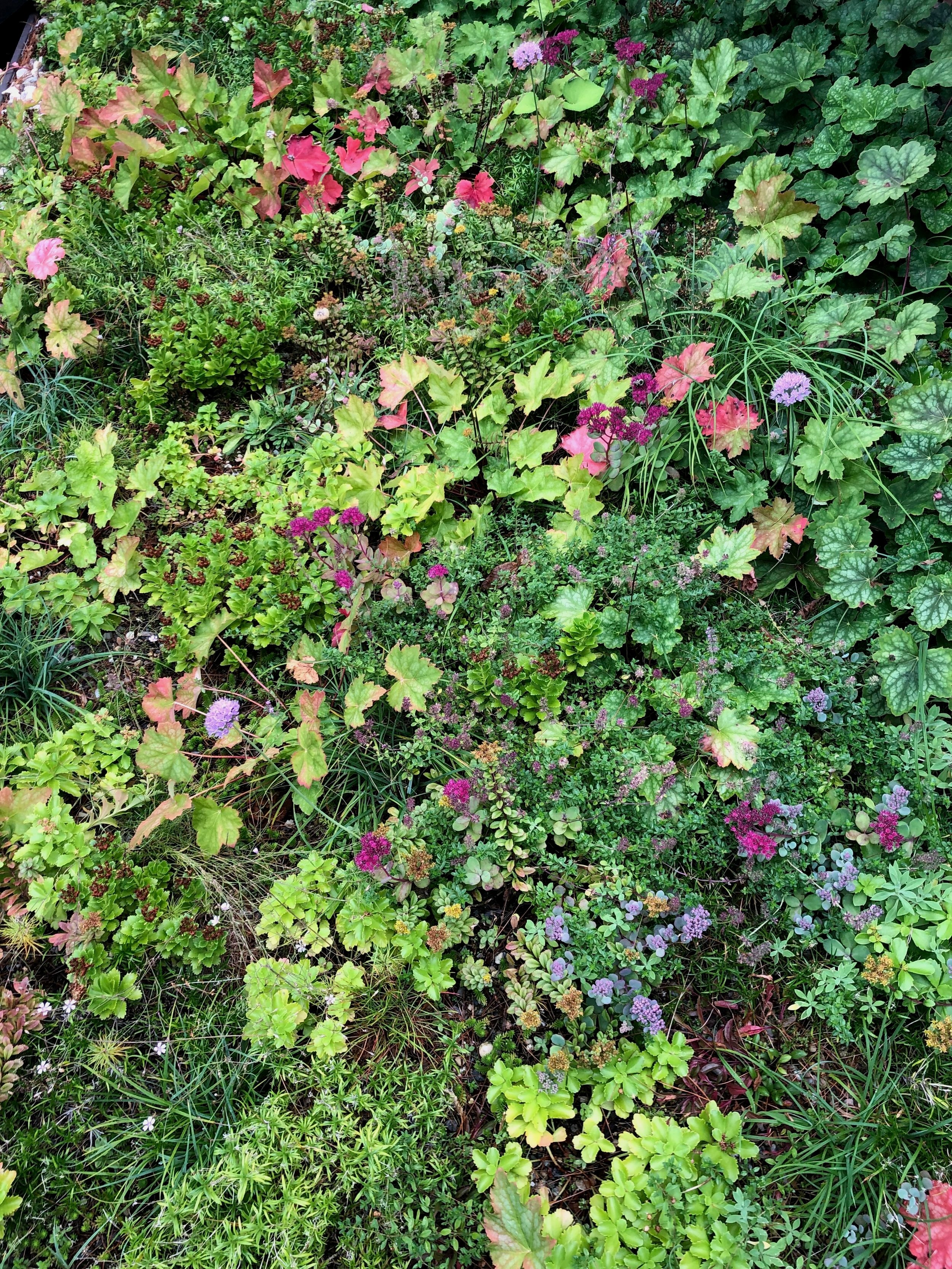
When planning any building project or renovation, you have many roofing options to chose from. Only living roofs provide a wide range of benefits for your home (besides protecting it) and the surrounding ecosystem.
Flat AND sloped roofs are both great candidates
(please see our ‘Inspiration’ page).
Let us bring your roof to life!
Company founder and operator, Nicholas DePalma has spent more than a decade providing his clients with their landscaping, building, and agricultural needs. Since 2017, he has been providing healthy, sustainable green roofing solutions to his customers. With a broad base of knowledge to pull from, Hudson Valley Green Roofs can creatively design and execute all of your living roof needs.
Benefits of living roofs
Beauty
Green roofs bring a colorful garden, with year round aesthetic appeal, to the roof of any building they are on. With a changing color palette through all four seasons, they bring beauty to an unexpected place. Ranging from 4” to 8” of growing media depth, your green roof can be a textured-mosaic-sedum meadow that hugs the surface, a 3’-4’ tall perennial grass and wildflower prairie, or anywhere in between.
Insulation
On average, green roofs increase the insulation (r-value) by .5 every inch of growing media installed. Most heat is lost through the roof. A green roof can save you money by increasing energy efficiency in your home, keeping your home warmer in winter, and cooler in summer. Additionally, the plants in summer shield the soil from heating and absorb the suns warmth, adding even more efficiency to your home cooling.
Management of rain water
Non-living roofing surfaces (asphalt, metal, plastic) shed water, they don’t utilize it. A 1,500 square foot roof sheds approx. 1,000 gallons of water per inch of rain. Through water retention, green roofs can reduce runoff by 70-80% in the summer months, acting as an integral component to the storm water management protocol of any property.
Carbon sequestration
Non-living roofs are considered carbon positive, as the materials used produce significant carbon emissions, and serve no purpose in reduction. Rooftops are not often considered useful for reducing a properties carbon footprint. With a green roof, carbon is being consumed from the atmosphere in the process of growing plant life, bringing your property closer to carbon neutral, if not carbon negative.
Pollinator support
In our world, pollinators that we depend on for food and flowers are in trouble. Green roofs support pollinators, through flowers containing nectar, and spaces for making habitat. Causing no issue with your water-tight roofing membrane, all sorts of pollinator species are able to cocoon and nest within and under the foliage of your living roof. With green roofs, you can support pollinators in a place where otherwise they could never survive.
Longevity
Living roofs keep the rubber roofing membrane protected from UV rays that otherwise deteriorate the EPDM quickly. By capturing the heat, and sheltering the membrane from drying winds and environmental conditions, green roofs on average, can be expected to thrive for 60 years or longer. This not only reduces the frequency you need to have your roof redone, but also reduces roofing waste in landfills.
Great alternative to solar power
Many buildings are not good candidates for solar power because they don’t get enough sun. Green roofs are a perfect alternative for people looking to choose a sustainable option for roofing their home/office. While making solar power is not possible without sun, many plants thrive in partial/full shade.
How it works
Whether you want a lush landscape of trees, wildflowers, and grasses, or a tight mat of vibrant succulents, it all starts with weight.
A 3”-4” “extensive” green roof can weigh anywhere from 15-30 psf (pounds/square foot), while 8”-11” deep “intensive” green roofs can weigh 60+ psf.
Often installed on top of a rubber/epdm roofing membrane, we must first determine the load capacity of your existing structure, or the structural requirements for supporting the green roof of your dreams on a new structure.

